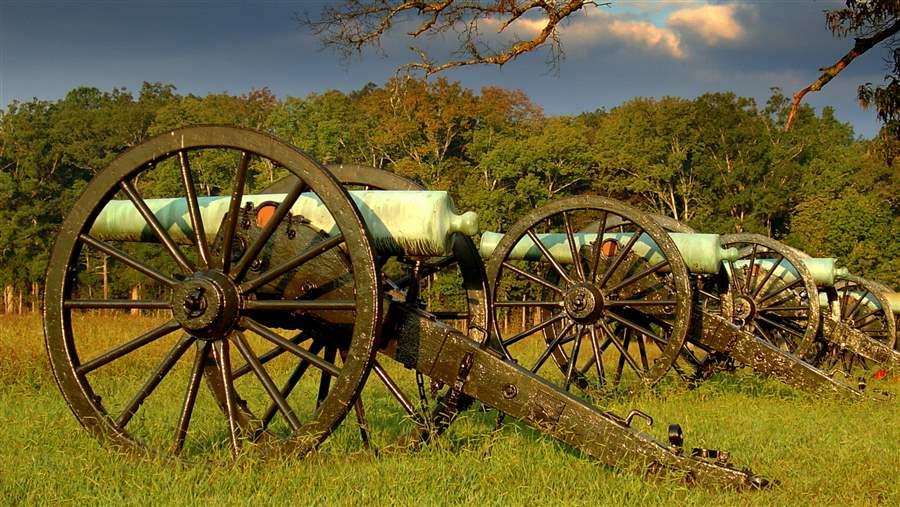Chickamauga and Chattanooga National Military Park
Tennessee and Georgia
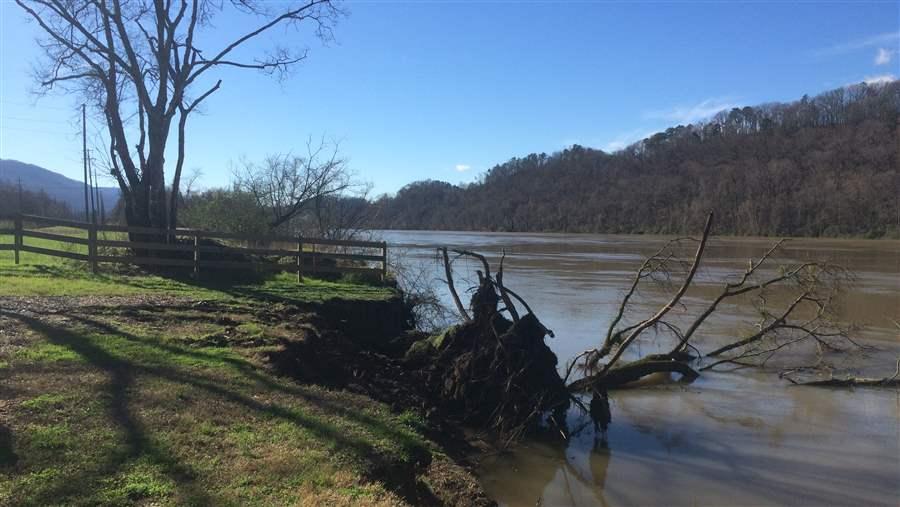
Storms and the flow of the Tennessee River have weakened the shoreline inside the national military park. Stabilizing it is among the park’s needed repairs.
© The Pew Charitable TrustsThis case study was updated on July 31, 2017, to reflect newly released 2016 data and to correct references to calendar and fiscal year.
Pew created this case study using National Park Service deferred maintenance data issued in fiscal year 2015. The information listed here may no longer reflect the NPS site’s current condition or maintenance requirements. To find the most up-to-date information, please use the National Park Repair Needs tool.
Overview
The battle fought on this land marked a turning point for the Union Army in the Civil War because it opened the path to Atlanta and the rest of the Deep South. Union and Confederate soldiers faced off in northern Georgia and southern Tennessee in fall 1863 near the Chickamauga Creek, which some translate from the Cherokee language as “the River of Death.”1 Confederate forces seeking to retake the important railway city of Chattanooga, Tennessee, launched a fierce attack on the Union Army. But General George “the Rock of Chickamauga” Thomas rallied his soldiers and prevented the Army’s collapse before retreating to Chattanooga.2 Over 34,000 people were killed, captured or wounded in the fighting, second only to the Battle of Gettysburg.3 Congress dedicated Chickamauga and Chattanooga National Military Park 32 years later, and it served as a model for other battlefield parks.4 Unfortunately, this sacred ground has an estimated $50 million in deferred maintenance.
Maintenance challenges
The park’s repair backlog is nearly split evenly between infrastructure—such as roads and trails—and memorials and landscaping. About 700 plaques, markers, and monuments are scattered across the 9,000-acre Chickamauga Battlefield5 and many need refurbishment. The landscape is in need of more than $2 million in repairs. This includes Signal Point, at the park’s northernmost edge. For centuries, Native Americans used this high ground to send smoke signals across the Tennessee Valley. During the Revolutionary War, Union lookouts used it to monitor Confederate troop movements below.
Another section of the park unique for its earlier history is also in need of repair to protect its archaeological integrity. Paleo-Indians can be traced back to Moccasin Bend National Archeological District as early as 10,000 B.C.
In the early 1830s,6 Cherokees were displaced from here in one of the “Trail of Tears” forced relocations of American Indians to western lands. The National Park Service (NPS) lists $7.2 million in deferred maintenance to shore up the Tennessee River waterfront near the site to make it safe and accessible to visitors.
Moccasin Bend is home to Civil War battles and Native American archeological treasures, but mounting overdue repairs are jeopardizing our ability to protect these resources and allow visitors to access the area.Michael Wurzel, executive director of Friends of Moccasin Bend
Recommendations
To address the deferred maintenance at Chickamauga and Chattanooga and other NPS sites in Tennessee, Georgia, and across the country, Congress should:
- Ensure that infrastructure initiatives include provisions to address park maintenance.
- Provide dedicated annual federal funding for national park repairs.
- Enact innovative policy reforms to ensure that deferred maintenance does not escalate.
- Provide more highway funding for NPS maintenance needs.
- Create more opportunities for public-private collaboration and donations to help restore park infrastructure.
Chickamauga and Chattanooga National Park Facts
2016
|
Visitor spending |
$66.2 million |
|
Jobs created by visitor spending |
1,000 |
|
Economic output |
$81.6 million |
|
Labor income |
$26.1 million |
|
Visits |
1,027,738 |
|
Deferred maintenance (fiscal year 2015) |
$49.5 million |
Sources: National Park Service, “Annual Visitation Reports by Years: 2006 to 2016,” accessed Feb. 17, 2017, https://irma.nps.gov/Stats/SSRSReports/National%20Reports/Annual%20Visitation%20By%20Park%20(1979%20-%20Last%20Calendar%20Year); National Park Service, “Visitor Spending Effects,” accessed Aug. 22, 2016, https://www.nps.gov/subjects/socialscience/vse.htm; National Park Service, “NPS Deferred Maintenance Reports,” accessed Aug. 19, 2016, https://www.nps.gov/subjects/plandesignconstruct/defermain.htm; Pew converted NPS data from this webpage and other NPS sources into a searchable database.
© 2017 The Pew Charitable Trusts
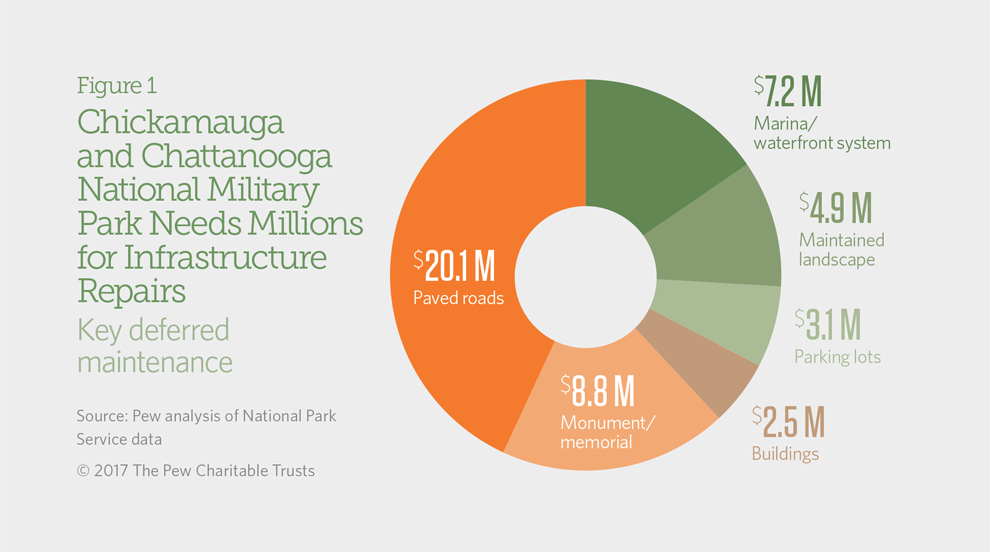
The Pew Charitable Trusts works alongside the National Parks Conservation Association, the National Trust for Historic Preservation, and other national and local groups to ensure that our national park resources are maintained and protected for future generations to enjoy.
Endnotes
- Troy Taylor, “The River of Death,” accessed Sept. 21, 2016, http://www.prairieghosts.com/chick.html.
- World History Group, “Battle of Chickamauga,” accessed Sept. 21, 2016, http://www.historynet.com/battle-of-chickamauga.
- New Georgia Encyclopedia, “Battle of Chickamauga,” accessed Sept. 21, 2016, http://www.georgiaencyclopedia.org/articles/history-archaeology/battle-chickamauga.
- National Park Service, “Chickamauga and Chattanooga National Military Park: Places,” accessed Sept. 21, 2016, https://www.nps.gov/ chch/learn/historyculture/places.htm.
- Ibid.
- National Park Service, “Moccasin Bend National Archeological District,” accessed Sept. 21, 2016, https://www.nps.gov/chch/learn/historyculture/moccasin-bend-national-archeological-district.htm.


National Parks Require Restoration
A look at the infrastructure needs of the nation’s treasured sites


America’s Overdose Crisis
Sign up for our five-email course explaining the overdose crisis in America, the state of treatment access, and ways to improve care
Sign up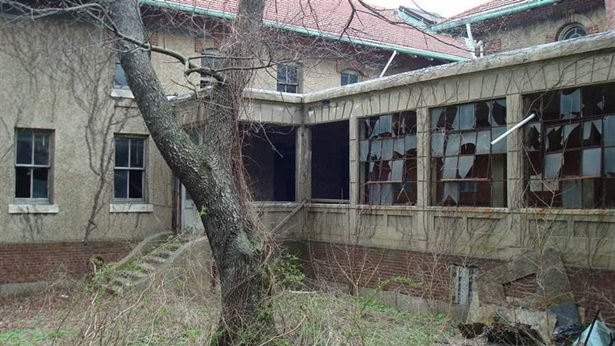
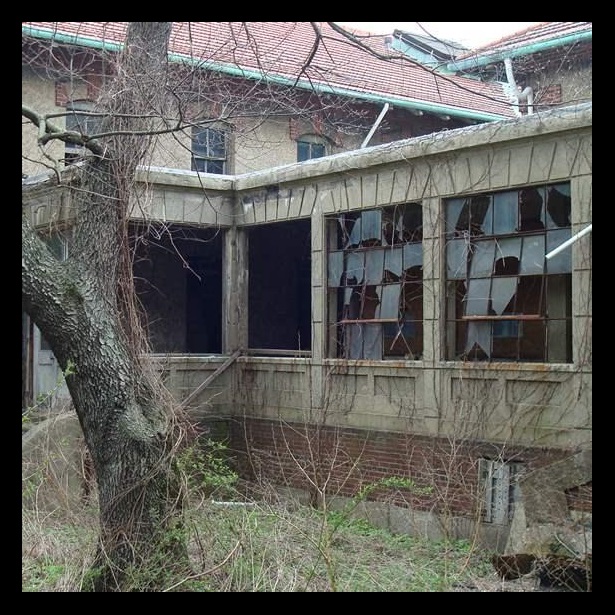
We Need to Restore Our National Parks
During National Park Week, natural and historic treasures are free to enjoy—but they also need help
